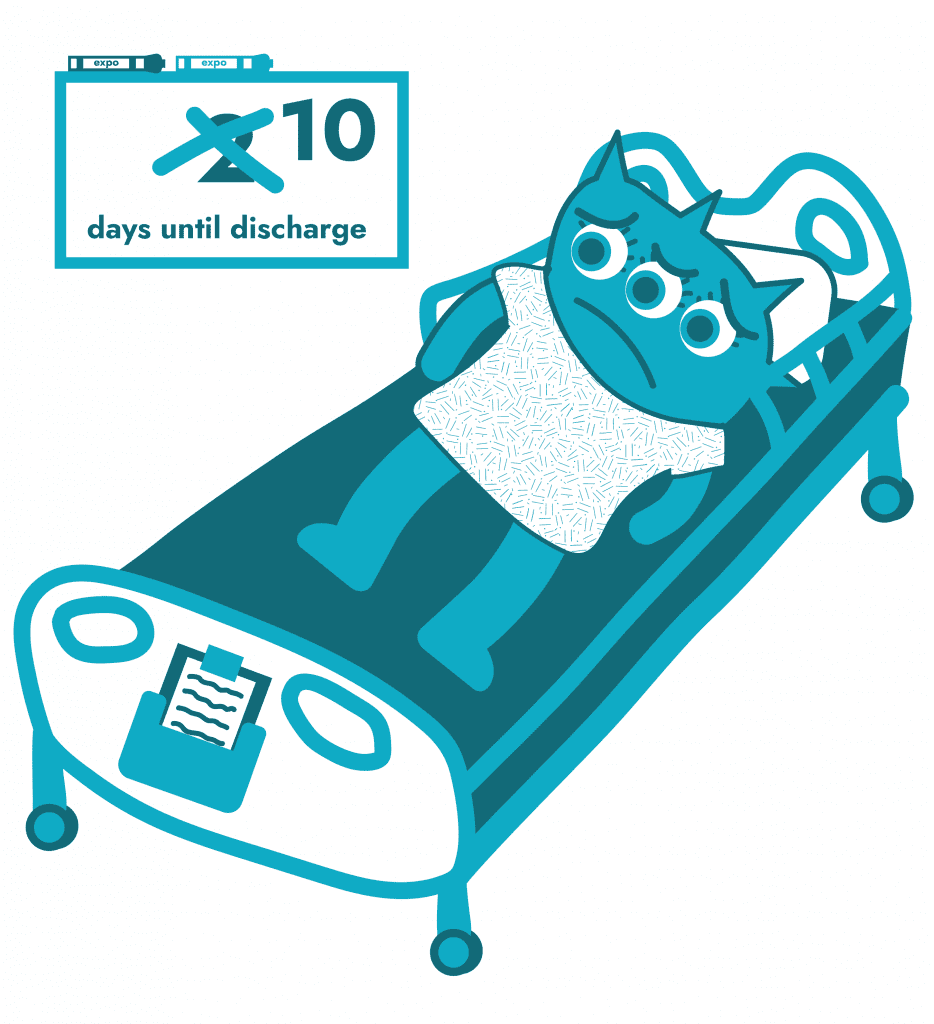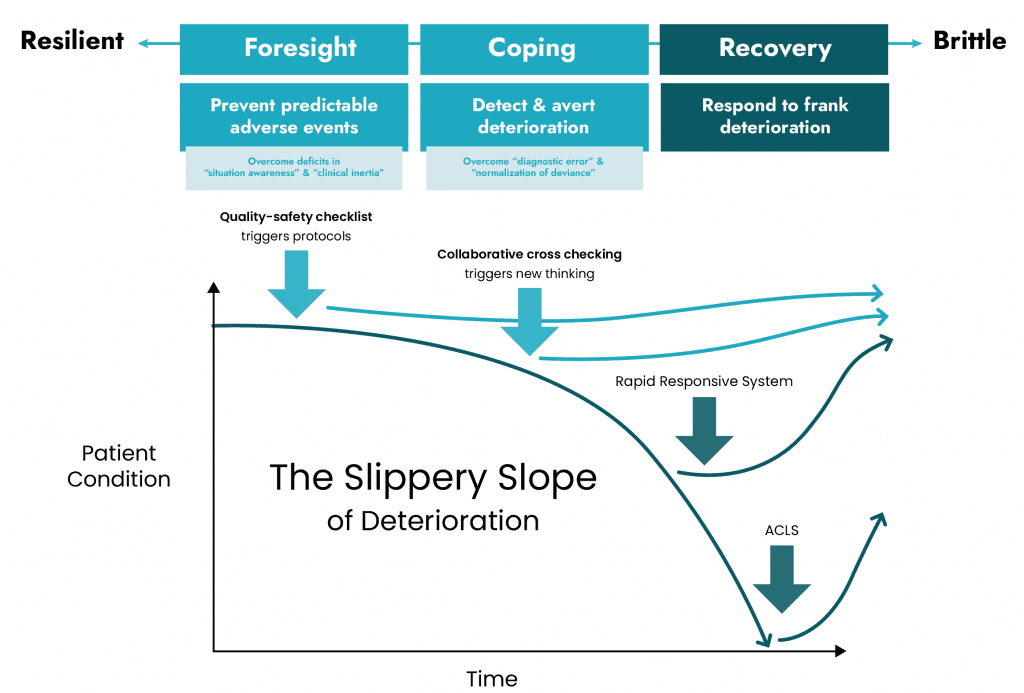
How can hospital units organize themselves to outpace the tempo of deteriorating patient condition (or deteriorating patient experience)?
The answer is resilience. What makes a hospital unit resilient is being able to stay ahead of issues as they arise. In the illustration below that foresight corresponds to the flatter part of the slope.
Hospital unit resilience comes from having a teamwork routine that (a) uses a quality-safety checklist to prevent predictable complications and (b) creates team accountability moments to help recognize and respond as early in the time-opportunity continuum as possible.
Most hospital units are brittle. If you’re working in a resilient hospital unit, you’d be able to recognize three complementary modes (see image) that create a proactive rather than a reactive care environment: (1) Foresight, (2) Coping, and (3) Recovery (Jeffcott et al 2009).

| Mode | Definition | How Great Teams Make it Happen |
| Foresight | Predicting and preventing adverse outcomes before they happen | Identify and mitigate risk-states using a quality-safety checklist which triggers best-practice protocols |
| Coping | Detecting and averting evolving adverse events before they become worse | – Collaborative cross-checks during rounds and face-to-face updates as condition changes – Revisions to diagnostic or treatment plan – Transfers to a high level of care |
| Recovery | Overcoming an adverse event once it has happened | – Call a Code MET or Raid-Response Team – Call a Code Blue |

Some questions to reflect on as you think about your own clinical environment:
What next?
Seeing is Believing
Knowledge is Power
The Wise Learn from the Wise
© 2024 • 1Unit • All rights Reserved.